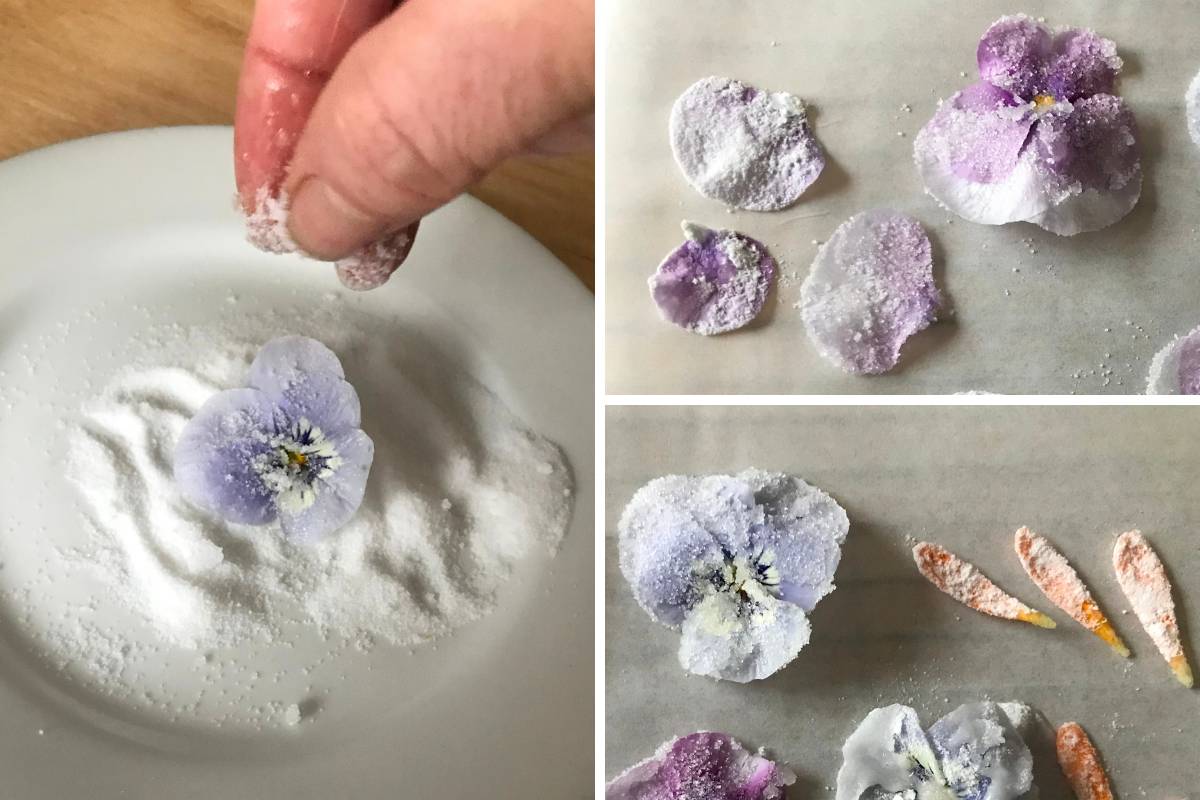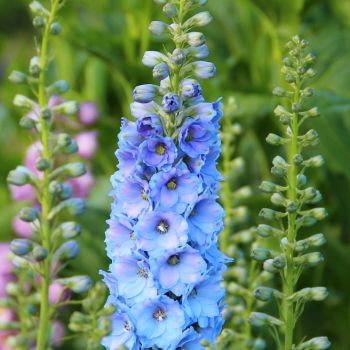Crystallising flowers is not only a beautiful way to preserve their delicate beauty but also a fantastic method to add a touch of old-fashioned elegance to cakes and pastries. Whether you're aiming to impress your high tea guests or simply make some cheerful and sustainable garnishes, this step-by-step guide will show you how to make your own delicate crystallised flowers.
Important note: Crystallised flowers were traditionally made using raw egg whites. Egg whites can contain salmonella, a bacteria that can cause Salmonellosis. Infants, children, the elderly and people with poor immune systems should not consume products made using uncooked eggs. Pasteurised egg white powder, sugar syrup and vegan egg replacer are all suitable alternatives to using egg white when making crystallised flowers.
What You’ll Need:
- Egg white powder, sugar syrup or vegan egg replacer
- Caster sugar
- Edible flowers
- Paintbrush
- Tweezers
- Wire rack or tray lined with baking paper
- Airtight container for storage
Method:
1. Choose the Right Flowers
The first step to creating crystallised flowers is to select the right blossoms. A wide range of flowers can be crystallised, each offering a unique and delightful flavour.
It's crucial to ensure that the flowers you choose are not only beautiful but are also safe to eat. Some popular choices include rose petals, viola, pansy, geranium, dianthus and cornflower. If you're feeling adventurous, you can also experiment with more unusual options, such as zucchini flowers.
Simple, fairly flat flowers are the easiest to crystallise. If using bulkier flowers like roses, it’s best to separate the blooms into individual petals. Opt for homegrown flowers or ones sold as edible flowers (bought from the fruit shop or supermarket, not the florist) to ensure they haven't been sprayed with chemicals.
2. Prepare the Egg Substitute.
Mix a small amount of egg white powder or egg substitute following the packet directions. Try not to create bubbles or foam when mixing the egg mixture, as these can cause the sugar to clump. If using sugar syrup, place ¼ cup sugar and ¼ cup water in a saucepan and heat until dissolved. Sugar syrup should be cooled to room temperature before use, so it's heat wont wilt the flowers.
Using the paintbrush, test the consistency of the mixture you’re using by painting a little on an unwanted flower or petal. The liquid should be easy to apply and should leave a thin, sticky coating on the petal without any liquid pooling. Add water a 1/4 teaspoon at a time to the mixture if required to achieve the desired consistency.
3. Coat the Flowers
Now comes the artistic part of crystallising flowers. Use a paintbrush to gently coat all surfaces of the flower with the egg white, egg substitute or sugar syrup. You can lie the flowers on baking paper, hold them gently in your hand, or use tweezers to hold them. Make sure to cover every nook and cranny, front and back.
4. Add Sugar
Next, use tweezers to hold the coated flowers over a bowl of sugar. Gently sprinkle the flowers all over with sugar, shaking off any excess.
Alternatively, gently drop the flowers into the bowl of sugar to coat them. Some people swear by this method, but for others it causes the sugar to clump together on the flowers. It may take a little trial and error to get a fine but even coating of sugar.
4. Dry the Flowers
Place the sugar-coated flowers on a tray lined with baking paper. Leave them to dry for about 24 hours, then gently inspect them to make sure they are completely dry. This drying process creates a protective sugar seal around the flowers, preserving their colour and delicate beauty.
5. Store the Flowers
Once your crystallised flowers are dry, store them in an airtight container. Use baking paper to separate layers of flowers in the container. You can also add a food-safe silicone pouch or a folded paper towel to the container to soak up any excess moisture.
Proper storage will keep your edible blossoms fresh and ready to adorn your culinary creations for several months.
Tips for Success
- Harvest your flowers in the morning when they are fully open but dry. This is when they are at their freshest.
- Use the flowers within an hour of harvesting to ensure they are as vibrant as possible.
- Using individual petals instead of whole flowers is essential for bulky flowers, but it can create a delicate, dainty look for other flowers too. Feel free to experiment to get the look you want.
- Be meticulous when applying the egg white or substitute, ensuring full coverage of the entire flower or petal with a thin coat. This creates a protective seal around the flower and avoids the sugar from forming clumps.
Crystallising flowers is not only a delightful culinary technique but also a unique way to add a touch of elegance to your dishes. Whether you're preparing desserts, salads, or other delightful creations, these crystallised flowers will take your presentation to the next level. Happy crystallising!









